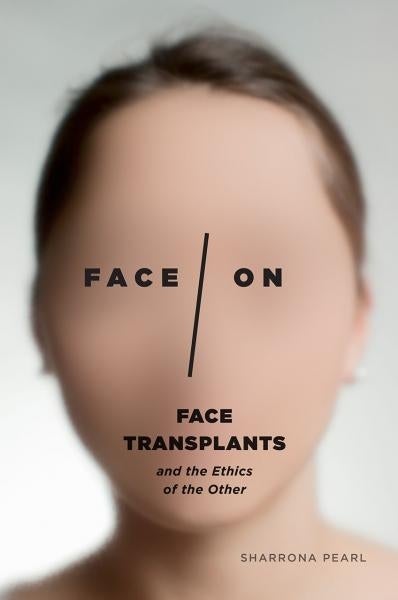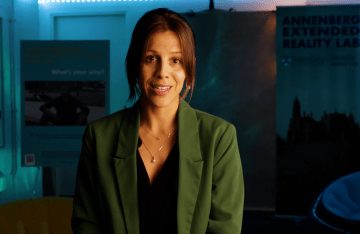Pearl Publishes New Book Face/On
Pearl uses a study of face transplants to explore why faces are so important to us.

Sharrona Pearl
In a hospital in France, in the autumn of 2005, Isabelle Dinoire received the world’s first face transplant. The world went into a moral panic.
“A lot of people thought that this was science fiction,” says Sharrona Pearl, Assistant Professor of Communication at the Annenberg School. “They felt that just because we could do it didn’t mean we should.”
In the nearly 12 years since Dinoire’s groundbreaking surgery, attitudes toward face transplants have gradually become more accepting. It is this change that interests Pearl, whose scholarship has focused on the face for years. Her new book, Face/On: Face Transplants and the Ethics of the Other (University of Chicago Press), uses a study of face transplants to explore why faces are so important to us.
Pearl’s first book, About Faces, focuses on the 19th century obsession with physiognomy, the study of facial features and their relationship to character. In Face/On, Pearl updates the discussion by investigating modern concerns with the face.

Pearl’s big question is this: Why is the face so core to identity?
“Face transplant surgery doesn’t just alter your face — like plastic surgery — but it literally gives you someone else’s face,” says Pearl. “That’s why it’s such a good case study for thinking about why we’re so invested in people’s faces remaining the same and why we’re so critical of people’s desires to change how they look.”
In Face/On, Pearl compares face transplant surgery with other whole organ transplants and considers how they are alike and different. She also examines media coverage of face transplants, which she says is structured exactly like — and also has been normalized by — makeover television. In addition, she studies three 1960s films about face transplants — one from France, one from Japan, and one from the U.S. — which represent each country’s understanding of what it means to “lose face.”
Whenever she discusses her work on face transplants, Pearl says she inevitably gets asked if face transplant surgeries will ever become elective procedures. Her answer? Definitely not.
“Face transplants involve 16 hour surgeries, a lifetime of immunosuppressant drugs, the necessity of finding the right donor, and so on,” Pearl says. “This is worth it, of course, for someone without any other options, someone without a face. But if you have a face and your goal is to look fabulous or look dramatically different, plastic surgery is always going to be an easier, safer route.”
Her next book will complete a sort of trilogy of faces. In the final installment, she will examine the history of makeup and prosthetics in film. As she does her research, she is asking questions like: How are manipulations of the face their own character? Is there infinite fluidity in what an actor can become for a film? Are people limited by the materiality of their bodies? Pearl is looking at gender-bending, cross-race casting, #OscarsSoWhite, and other issues in the film industry to answer these questions.
Face/On is currently available from University of Chicago Press and will be widely available in April.



